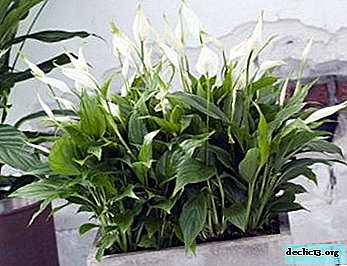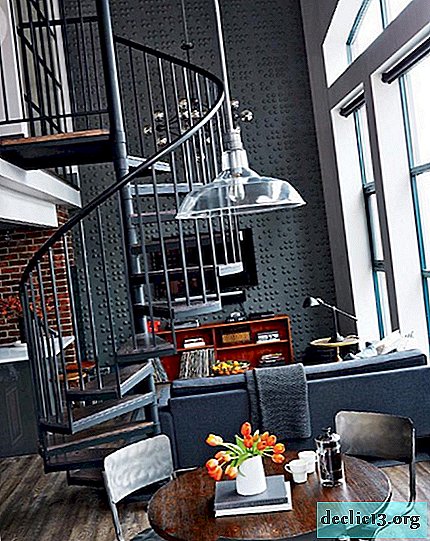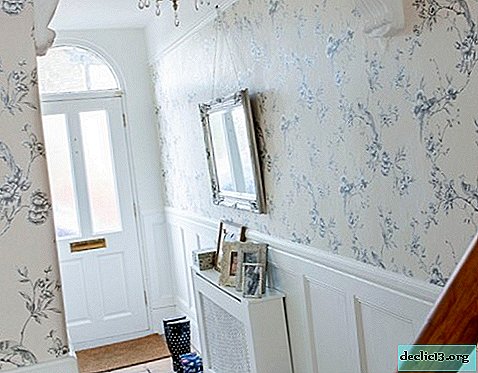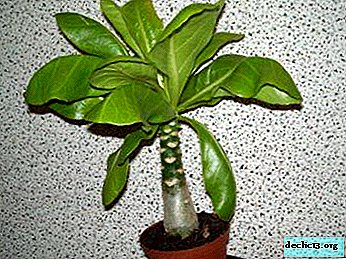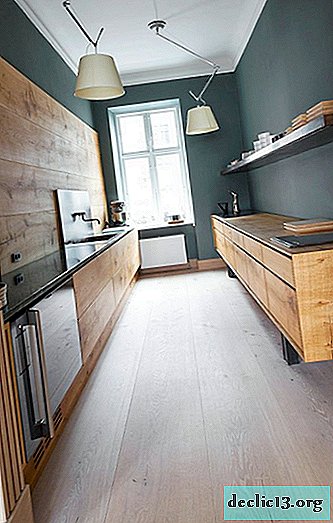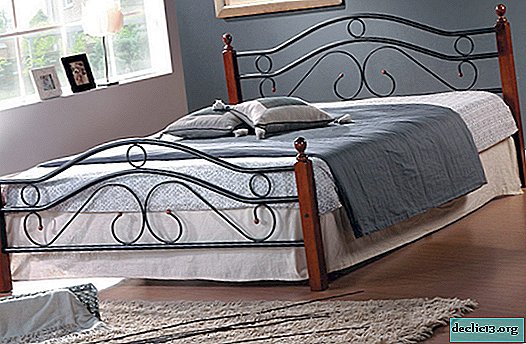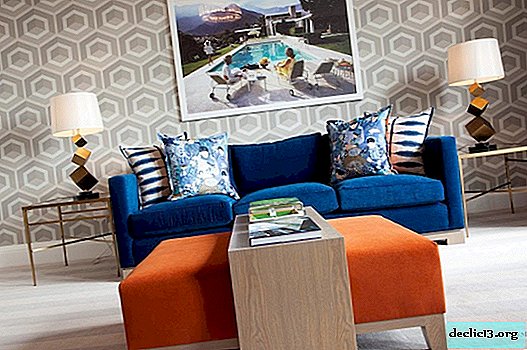Cooker hood - choose the best option
Whatever the name of a kitchen hood is called an air purifier or an over-the-top filter, the question of choosing this important element of household kitchen appliances is quite acute. Just some 15-20 years ago, many of our compatriots planning to repair the kitchen would not even have thought about choosing a hood for a room with a high level of air pollution. Nowadays it is difficult to imagine a kitchen space without this necessary appliance. The question of choosing an air purifier is especially acute for kitchens combined with a living room, dining room, and sometimes the entire living space of an apartment or private house. With the growing popularity of the use of open plan in the design of modern homes, the need to install high-quality and powerful hoods has increased significantly.


Modern housewives have already managed to make sure that a kitchen without a hood is an endless reason for cleaning. Until recently, the snow-white ceiling above the stove darkened, the walls and hanging cabinets took on an untidy appearance. And these are just the consequences that can be seen visually, there is not even a word about the smell of burning and the air polluted by the products of combustion of various foods. In order to prolong the primordial image of the kitchen, “as after repair”, to rid yourself and household members of unpleasant odors, to catch particles of fat floating in the air above the stove and to reduce the number of general cleanings of the kitchen space at times, you must choose the right hood.


Selection criteria for kitchen hoods
Regardless of the model, all hoods are designed to purify the air in the kitchen space. This process is carried out in one of two ways:
- air filtration method in the room - air is passed through the built-in filters and the purified one is returned to the kitchen space;
- using exhaust ventilation - contaminated air is removed outside the kitchen.
Modern models of hoods for the kitchen, most often, are equipped with a combined action system - they can perform both types of actions in turn.


Performance
One of the most important criteria for choosing a hood for a kitchen is its performance - the amount of air that the unit can pass through itself in a unit of time. Obviously, the performance of a household appliance directly depends on this indicator. If you believe the indicators of sanitary standards, then all the air in the kitchen space should be replaced in 1 hour.


You can independently calculate the necessary hood performance specifically for your kitchen. For this, it is necessary to multiply the area of the kitchen room by the height of the ceiling, then multiply by 12 (this is the air exchange rate determined by the SES) and multiply the resulting number by a potential margin factor of 1.3. For example, for a kitchen with an area of 6 square meters and a ceiling height of 2.5 m, it is necessary to choose an air purifier with a capacity of at least 234 cubic meters per hour.


The size
According to experts, the width of the hood should not be less than the size of the stove or hob. If the hood is significantly less, it will be worse to catch contaminated air. If the width of your stove is 55-60 cm, then it is better to get a hood with a size of at least 80 cm. But not always the space above the hob and the design of the kitchen set allows you to follow this rule. And among the design models of hoods there are many original forms with a small size, but high power.


Operating modes
As mentioned above, the kitchen air purifier can work in the filtration mode, purifying the air passed through itself, or can act on the principle of forced ventilation. Many models are able to work in combined mode. It is believed that one hundred percent purification of the air in the room can only be ensured by the exhaust mode, but, as we understand it, air flow with this method of action does not occur. Having chosen the principle of ventilation, it will be necessary to immediately purchase replaceable filters and carefully monitor the timely change of products.


Filter Models
Almost all modern models of hoods are equipped with filter elements. As with water purification, filters for air purification are divided into products of rough and fine purification. Coarse filters retain only particles of grease and are thin metal grids. Such filters are reusable, they can be washed with the help of special cleaning agents. Fine filters, as a rule, are carbon elements. They must be purchased separately, and the replacement period depends on the intensity of use of the ventilation mode on your hood.


In modern models, in addition to coarse and fine filters, there are intermediate, additional filtering elements. Most often they are a thin mesh of synthetic material. This grid is disposable, it needs to be changed as necessary. Do not forget to check the level of contamination - a synthetic mesh that has exhausted its resource can harm the operation of the entire device.


Ways of working
The choice of hood control method depends entirely on your preference. Modern air purifiers can be equipped with a touch control panel - pressing non-convex buttons. Many homeowners like the familiar way of using a button system. Many modern models of hoods are equipped with control panels with the simplest task panels.


Additional options
When choosing a hood for the kitchen, you should pay attention to additional criteria, among which, for example, the residual stroke of the fan. This function ensures the operation of the hood after shutdown (typically 5 to 15 minutes). This "bonus" allows you to completely clean the air after cooking. Additional options include interval switching on the device. For example, 1-2 times per hour the hood is switched on for a short time (5-10min) to ensure continuous updating of air in the room. Even the room, which is currently not cooking, needs timely ventilation.
 Some models are equipped with an electronic timer, which should be turned on at the end of cooking, so that the appliance switches off after a certain time, and you can go about your business without monitoring the operation of the hood.
Some models are equipped with an electronic timer, which should be turned on at the end of cooking, so that the appliance switches off after a certain time, and you can go about your business without monitoring the operation of the hood.
 Many modern models are equipped with built-in light sources. The most popular devices with halogen lamps, which last a long time, save energy and easily change.
Many modern models are equipped with built-in light sources. The most popular devices with halogen lamps, which last a long time, save energy and easily change.

 Modern models of hoods are able to remove up to 95% of odors and air pollution. When choosing a cleaning device, it is especially important to pay attention to the maximum performance for the owners of studio apartments and private houses with an open plan kitchen, dining room and living room. In such rooms, not only the power of the device is important, but also its “noise”.
Modern models of hoods are able to remove up to 95% of odors and air pollution. When choosing a cleaning device, it is especially important to pay attention to the maximum performance for the owners of studio apartments and private houses with an open plan kitchen, dining room and living room. In such rooms, not only the power of the device is important, but also its “noise”.
 The operation of the air purifier can be compared to very quiet if the sound produced is comparable to a whisper (up to 35 decibels). The hood is considered quiet if the sound is comparable to a conversation at a distance of 10 m (this is about 45 decibels). If your kitchen is an isolated room, then a hood with a noise level of up to 50 decibels will not become an obstacle. A similar level of emitted sounds is usually regarded as normal. All parameters in excess of 50 decibels can be considered unsuitable for use in residential spaces - you simply cannot ignore such noise.
The operation of the air purifier can be compared to very quiet if the sound produced is comparable to a whisper (up to 35 decibels). The hood is considered quiet if the sound is comparable to a conversation at a distance of 10 m (this is about 45 decibels). If your kitchen is an isolated room, then a hood with a noise level of up to 50 decibels will not become an obstacle. A similar level of emitted sounds is usually regarded as normal. All parameters in excess of 50 decibels can be considered unsuitable for use in residential spaces - you simply cannot ignore such noise.

Body material
Choosing a hood, do not stop only on the technical characteristics, evaluate also the material of which the device body is made. It could be:
- plastic;
- enameled steel;
- stainless steel;
- aluminum;
- strained glass.

 If we talk about the price-quality ratio, the most popular is the equipment with a body made of machined aluminum. The matte surface of this material is in perfect harmony with many models of kitchen appliances. The aluminum case is easy to wash, it is not subject to corrosion, fingerprints are not visible on its surface.
If we talk about the price-quality ratio, the most popular is the equipment with a body made of machined aluminum. The matte surface of this material is in perfect harmony with many models of kitchen appliances. The aluminum case is easy to wash, it is not subject to corrosion, fingerprints are not visible on its surface.

Stainless steel case combined with tempered glass looks very stylish and modern. Such a device will be organically integrated into the kitchen, decorated in a modern interior style. There is an opportunity to order an individual manufacture of the device with the required set of functions, the choice of case material and original design.



Factors on which the efficiency of the air cleaner for the kitchen depends:
- air pressure generated by the motor. Obviously, high air pressure will be accompanied by good instrument performance;
- mode of operation of the mechanism. The hood drawn into the ventilation shaft works more efficiently than the device in ventilation mode;
- cross-section of grease filters and the density of carbon filter elements (if any in the design of the device). The denser the filter, the higher the air cleaning performance. But it is important to understand that not a single filter element will provide 100% air purification;
- margin of productivity. The mode that allows you to quickly purify the air in extreme conditions - when burning food, is most effective. When choosing a hood, it makes sense to pay attention to this parameter;
- device dimensions. The larger the hood’s dimensions, the larger the area where contaminated air is captured. This means that less air turbulence will be produced near the kitchen furniture. After all, it is known that the surface of a kitchen set near a stove or hob is subject to drying over time due to the constant exposure to hot air.


Types of cooker hoods
Traditional (classical)
This is a hanging model that is mounted to a wall above a stove or hob. Sometimes this hood is placed under the kitchen cabinet of the upper tier. This is one of the most affordable air purifier options for the kitchen. Manufacturers offer devices with grease traps disposable acrylic filters. Operation in air recirculation mode requires the installation of carbon filters that can neutralize small particles. The smell of such devices is only partially removed.


Recessed
The name speaks for itself - the model is built into the upper cabinet of the kitchen set located above the stove or hob. Typically, these hoods are equipped with a retractable panel that increases the area of air intake that needs to be cleaned. This option greatly facilitates the management of equipment and increases its productivity. As a rule, such models are equipped with two motors and multi-layer filters that capture particles of fat. Built-in appliances do not differ much in price from traditional ones. If you choose between these two options, it is best to purchase a device that you can integrate into a hanging cabinet.




Fireplace (dome)
Such models are mounted to the ceiling or wall above the stove or hob. The hood got its name because of its resemblance to a chimney pipe (chimney). Such air purifiers come in different variations - all-metal, metal with glass, classic (wood-finished). The design of fireplace hoods can be the most creative and suitable for kitchen spaces decorated in various interior styles - from traditional to hi-tech.



Dome hoods can also include island models. They are most often located directly above the hob and are attached exclusively to the ceiling. Such models are especially effective when using the layout of the kitchen space with the island into which the stove or hob is integrated. The design of island models can be the most diverse - from a simple rectangular box to a device comparable to space equipment.




Vertical (inclined)
The difference between such hoods in the location of the gripping panel in relation to the stove. The hood is located vertically or at a slight angle relative to the cooking surface of the food. Such models help to save the useful space of the kitchen, while not inferior in performance to traditional appliances.





Several creative solutions for various interior styles
A hood with an original design can become a key element in the interior of a kitchen space. Modern designer models are able to overshadow the bright facades of the kitchen set and the unusual finish of the apron. The hood, which is in harmony with other household appliances in the kitchen, looks particularly impressive.



About many modern models of air purifiers, it does not immediately become clear that this is a household appliance. Some hoods look like pendant lights with many decorative elements. By the way, such devices also carry out backlight functions.



A loft-style kitchen is open communications against a brick or concrete wall. It’s not necessary to hide the hood from the eyes; displaying this household appliance is part of the design style concept. In such design projects, as a rule, massive domed air purifiers with shiny or matte metal surfaces are used.



In the kitchen, decorated in a modern style or hi-tech, the original island models with shiny (often chrome) surfaces harmoniously look. Round and oval, rhomboid and asymmetric shapes - there is no limit to the variety of options.





The hood, which is part of the ventilation pipe, looks originally. Such a design allows you to save free space above the working area of the kitchen, although it reduces the performance of the appliance itself.

The hood panel used for air intake is often extended to one side of the hob. It turns out a kind of shelf on which you can store the necessary kitchen accessories. As a rule, such a surface is equipped with lamps. As a result, you get a light source not only above the hob, but also a sink or chopping place (depending on the arrangement of the kitchen island).



For some designers and homeowners, the norm is to immediately place a pair of identical hoods above a stove or hob. The design of the room as a result only wins due to the originality of the approach, but the performance of air recirculation doubles.





